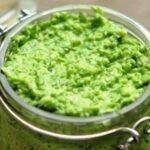Wheat flour Type 550 still says something to most people, but why does it say Type 630 for spelled flour? And what is the difference to the other varieties with the designations 812 and 1050? We have the answers for you!
Small variety knowledge: spelled flour types
Depending on which spelled recipes with the ground grain are on the menu, other types of ancient wheat are recommended. Like wheat or rye flour, spelled flour is also marked with different numbers, the so-called type number. It stands for the mineral content and not for the degree of fineness, as many think. Type 630 spelled flour contains 630 milligrams of minerals per 100 grams. Types 812 and 1050 contain 812 and 1050 milligrams respectively. The minerals come mainly from the surface layers of the grain kernels. In the case of flours with a high number of types, more of it is ground – the flours become coarser and darker. Wholemeal spelled flour does not have a type number, since the entire grain, including the husk and germ, is processed here.
Use of spelled flour according to type number
Due to the difference between the types of spelled flour in terms of nutrient content, color and fineness, you can choose the right type for every recipe. Fine pastries such as sweet or savory waffles as well as cakes, pizza and cookies are best baked with spelled flour type 630, for a hearty, vital substance-rich banana bread it can also be used with spelled flour type 812. If you bake bread with the whole grain variant or spelled flour type 1050, it will be hearty and nutritious. If you want to replace wheat flour with spelled flour, the types should roughly match. Instead of wheat flour type 550, spelled flour type 630 can be used, for a recipe with wheat flour type 1050 simply use spelled flour 1050, etc. Spelled only reacts more sensitively with bread dough with a long kneading time – half the time is often sufficient for kneading. If necessary, add a little more liquid to the dough, as spelled flour absorbs more of it.
Shelf Life: Whole grain better consume soon
In addition to the differences in baking, spelled flour can also be stored for different periods of time. Wholemeal flour has a shorter sell-by date than highly refined flour. The reason is the higher fat content, which can cause the flour to go rancid. The rule of thumb for orientation is: wholemeal spelled flour keeps for up to eight weeks, type 1050 up to six months, and spelled flours 812 and 630 up to 18 months. Even after that, most flours can still be used without any problems but may have lost some of their taste.



